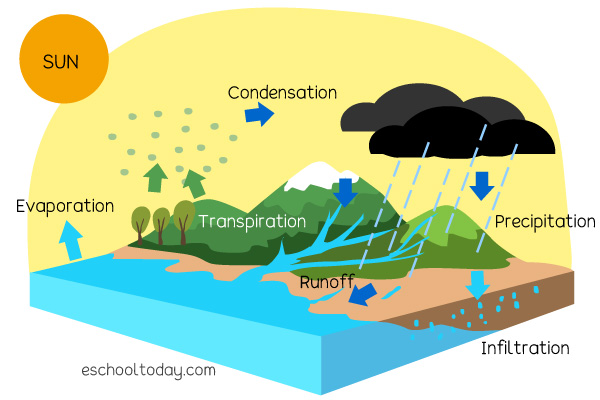- Water Scarcity
The Water Cycle
Water is a renewable resource. Its cycle (also known as the hydrologic cycle) is simply the journey water takes as it circulates from the land to the atmosphere and back again.
With the help of the diagram below, let us see how the cycle works:

Let us start this cycle with precipitation. Precipitation is water that begins as tiny droplets and becomes big drops that fall from the sky (atmosphere) in the form of snow, rain, and due.
Precipitation creates run-off, which adds to flowing water and end up in rivers, streams, lakes, lagoons, and seas.
Some of the water also percolates (seeps through the soil) and into underground water. This process is called infiltration.
The collected surface water then evaporates (turns into a gas) and ends up as water vapor in the atmosphere.
Condensation occurs, and the water vapor it turned into rain-bearing clouds. In addition to that, plants absorb moisture, which also evaporates from the leaves into the atmosphere. It means there is more evaporation in regions with more water bodies and massive vegetation and tends to have more rain-bearing clouds.
Rain-bearing clouds then release the water in the form of precipitation, and the cycle begins again.
